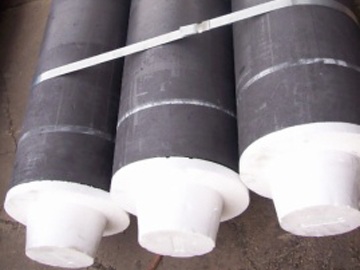Graphite electrode is a conductive material mainly used in iron and steel smelting. It is a non-metallic solid material dominated by carbon. It is made of petroleum coke and needle coke as raw materials and coal tar pitch as binder. It is a conductor that releases electric energy in the form of electric arc in the electric arc furnace to heat and melt the furnace charge after calcination, batching, kneading, molding, roasting, graphitization and machining.
According to the quality index, it can be divided into ordinary power graphite electrode, high quality graphite electrode and ultra-high power graphite electrode. The main difference lies in the current density it can carry, which is suitable for electric arc furnaces with different powers.
The production process of graphite electrode is long and complex. There are certain barriers in the process and equipment. Roasting and impregnation are the core processes.
At present, the production of ultra-high power graphite electrodes at home and abroad mainly adopts the “one-time impregnation and two-time roasting” process, which belongs to the mature experience of advanced carbon enterprises at home and abroad for many years, and the process is cumbersome and complex, and it is necessary to use full-automatic control system for production process control and management to ensure product quality. The joint needs to undergo “three times of impregnation and four times of roasting”.
Roasting production cycle is long, energy consumption is high, and has a great impact on the quality of finished products and the yield of subsequent processes. Therefore, the selection of roasting furnace is very important.
In addition, the process needs to be matched with foreign advanced equipment, such as fully automatic batching, vertical tamping, horizontal press and other equipment to achieve large-scale production. New enterprises need to spend a lot of time and money on research and development to master the process and support the corresponding equipment.

